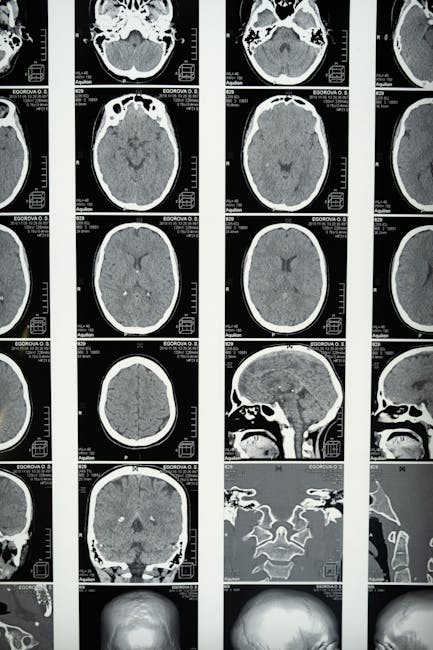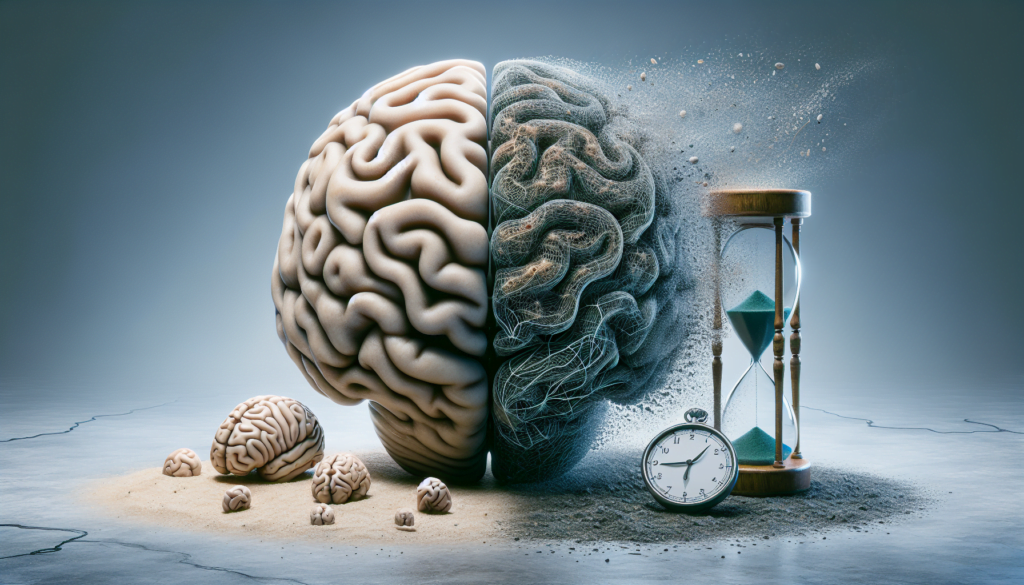The human brain, a marvel of biological engineering, is not only capable of complex thought and emotion but is also remarkably adaptable. This adaptability, known as neuroplasticity, allows the brain to change and reorganize itself by forming new neural connections throughout life. Understanding this process is crucial for anyone interested in maintaining brain health, overcoming neurological challenges, or simply curious about the brain’s potential to evolve.
Key Takeaways
- Neuroplasticity is the brain’s ability to reorganize itself by forming new neural connections.
- The brain’s adaptability plays a significant role in addiction recovery and rehabilitation from neurological conditions.
- Physical activity and diet have profound impacts on brain health and neuroplasticity.
- The brain undergoes changes throughout the lifespan, with potential for both cognitive decline and maintenance.
- Lifestyle factors, such as exercise and sleep, are important for maintaining brain health.
- Understanding neurological conditions like migraines can benefit from insights into brain plasticity.
- Perspectives on addiction as a learning process or a disease influence treatment approaches.
- Techniques like cognitive training and mindfulness can enhance neuroplasticity.
Introduction to Neuroplasticity
Definition of Neuroplasticity
Neuroplasticity, or brain plasticity, refers to the brain’s ability to reorganize itself both physically and functionally throughout a person’s life due to their environment, behavior, thinking, and emotions. It is the underlying principle that supports learning and memory, and it is also the mechanism that allows for recovery from brain injury.
Overview of Brain Adaptability
The brain’s adaptability is a testament to its resilience. It can compensate for lost functions, maximize remaining functions, and even rewire itself to adjust to new situations or changes in the environment. This remarkable flexibility is not just limited to the developing brain but continues well into adulthood and old age.

Neuroplasticity and Addiction
Brain’s Response to Drugs of Abuse
Drugs of abuse can hijack the brain’s reward system, leading to alterations in the brain’s structure and function. These changes can affect behavior, making it difficult for individuals to resist the urge to take drugs, thus perpetuating the cycle of addiction.
Modifying Behaviors Related to Addiction
Role of Neuroplasticity in Recovery
Neuroplasticity is also the brain’s way of healing and adapting in response to addiction. Through various therapies and interventions, individuals can retrain their brains, forming new, healthy connections that replace the ones formed by addictive behaviors.
Challenges and Opportunities
While neuroplasticity provides a path to recovery, it also presents challenges. The same plasticity that allows for learning and adaptation can also make it difficult to break the cycle of addiction. However, understanding this can open up opportunities for developing more effective treatments.

The Brain-Body Connection
Influence of Physical Activity on Brain Adaptation
Exercise and Neuroplasticity
Physical activity is a powerful stimulant for neuroplasticity. Exercise not only helps in the formation of new neural connections but also in the maintenance and strengthening of existing ones. This can lead to improved cognitive function and a lower risk of cognitive decline.
Benefits of Physical Therapy for Neurological Conditions
Physical therapy can be particularly beneficial for individuals with neurological conditions, as it leverages the brain’s natural ability to adapt and can lead to significant improvements in function and quality of life.
Impact of Diet on Brain Health
Role of Healthy Eating in Brain Function
A balanced diet provides the brain with the necessary nutrients to maintain optimal function and support neuroplasticity. Certain foods and dietary patterns can enhance cognitive function and protect against neurodegenerative diseases.

Brain Changes Throughout the Lifespan
Brain Development and Aging
How the Brain Changes as People Age
As people age, the brain undergoes natural changes, which can lead to both cognitive decline and cognitive maintenance. Factors such as genetics, lifestyle, and environment play a role in how the brain ages.
Cognitive Decline vs. Cognitive Maintenance
While some degree of cognitive decline is expected with aging, it is not inevitable. Many individuals maintain high levels of cognitive function well into old age, a phenomenon often attributed to a lifetime of engaging in mentally stimulating activities and maintaining overall health.
Cognitive Super Agers
Characteristics of Super Agers
Cognitive super agers are individuals who maintain exceptional mental abilities despite their advanced age. Research into the habits and brain structures of these individuals provides insights into how to promote cognitive longevity.
Secrets to Their Cognitive Longevity
The secrets to the cognitive longevity of super agers may include a combination of genetics, lifestyle choices, and social factors that contribute to their remarkable brain health.

Brain Health Interventions
Clinical Trials on Brain Aging
Investigating New Treatments and Therapies
Clinical trials are essential for advancing our understanding of brain aging and for developing new treatments and therapies that can promote brain health and neuroplasticity in the aging population.
Lifestyle Factors and Brain Health
Exercise and Physical Activity
Regular exercise and physical activity are among the most important lifestyle factors for maintaining brain health. They not only improve blood flow to the brain but also support the growth of new neurons and connections.
The Role of Sleep in Neurological Health
Sleep plays a critical role in brain health, as it is during sleep that the brain consolidates memories and clears out toxins. Adequate sleep is essential for maintaining cognitive function and promoting neuroplasticity.

Understanding Neurological Conditions
Migraines
Symptoms and Triggers
Migraines are a common neurological condition characterized by intense headaches and other symptoms. Understanding the triggers and symptoms is crucial for managing this condition.
Treatment Options
A range of treatment options is available for migraines, from medication to lifestyle changes. Insights into neuroplasticity can inform new approaches to treatment and prevention.
Brain Plasticity in Drug Addiction
The Burden of Addiction on Brain Adaptability
Addiction can place a significant burden on the brain’s adaptability, making it challenging for individuals to break free from the cycle of addiction.
The Benefit of Brain Plasticity in Overcoming Addiction
However, the brain’s plasticity also offers hope. It is this very ability to change and adapt that can be harnessed in the treatment of addiction, helping individuals to recover and rebuild their lives.
Perspectives on Addiction and Behavior
Addiction as a Learning Process
Viewing addiction as a learning process emphasizes the role of behavior and environment in the development and maintenance of addictive behaviors. This perspective can inform strategies for prevention and treatment.
Addiction as a Disease
Implications for Treatment and Recovery
Considering addiction as a disease highlights the changes in brain structure and function that occur with addiction. This view supports the development of medical and therapeutic interventions to treat addiction.

Learning and Adaptation
Adapting to New Behaviors
The Role of Neuroplasticity in Learning
Neuroplasticity is central to the process of learning and adapting to new behaviors. It allows the brain to adjust to new information and experiences, supporting lifelong learning.
Strategies for Encouraging Positive Behavioral Change
Encouraging positive behavioral change involves leveraging neuroplasticity through various strategies, including repetition, reinforcement, and environmental modifications.
Enhancing Neuroplasticity
Techniques to Promote Brain Adaptability
Cognitive Training Exercises
Cognitive training exercises are designed to improve specific brain functions and can lead to enhanced neuroplasticity and better cognitive performance.
Mindfulness and Meditation
Mindfulness and meditation practices have been shown to promote changes in brain structure and function, supporting the brain’s ability to adapt and change.
Conclusion
Summary of Neuroplasticity’s Role in Lifelong Brain Adaptation
Neuroplasticity is a fundamental characteristic of the brain that enables it to change and adapt throughout life. It plays a crucial role in learning, recovery from injury, and maintaining cognitive function as we age.
Future Directions in Research and Application
The future of neuroplasticity research holds promise for developing new interventions and therapies to enhance brain health and treat neurological conditions. Understanding and harnessing the power of the brain’s adaptability will continue to be a key focus in neuroscience and medicine.
In conclusion, the brain’s ability to change and adapt throughout life is a powerful asset that can be harnessed for health, recovery, and personal growth. Whether it’s through managing stress, learning new knowledge and behaviors, or restructuring cognitive patterns, the potential for change is a constant companion in the journey of life.
Unlocking the Mysteries of the Mind: Your Brain’s Ability to Change FAQ
Is it true that the brain can change and adapt throughout life?
Yes, it is true. The brain’s ability to change and adapt in response to new experiences, learning, and other factors is known as neuroplasticity. This process occurs at any age, although the rate and ease of change may decrease as one gets older. Neuroplasticity allows for the neurons in the brain to compensate for injury and disease and to adjust their activities in response to new situations or changes in their environment.
What is neuroplasticity?
Neuroplasticity, also known as brain plasticity, is the brain’s ability to reorganize itself by forming new neural connections throughout life. This reorganization can be the result of learning new things, experience, or as a response to injury. Neuroplasticity allows the neurons (nerve cells) in the brain to adjust their activities in response to new situations or to changes in their environment.
Can adults learn new skills as effectively as children?
While children’s brains are generally more ‘plastic’ and receptive to learning new skills, adults can also learn effectively. The plasticity of an adult brain may require more effort and repetition, but through consistent practice and engagement, adults can achieve significant learning and skill acquisition.
Does brain plasticity mean that brain damage is always reversible?
Brain plasticity does not guarantee that all brain damage is reversible. The extent to which the brain can recover from damage depends on the severity and location of the injury, the age and health of the individual, and the rehabilitation efforts taken. While plasticity can aid in recovery, some brain damage can result in permanent changes or loss of function.
How can I encourage neuroplasticity in my own brain?
You can encourage neuroplasticity by engaging in activities that challenge your brain, such as learning a new language, playing a musical instrument, or solving puzzles. Regular physical exercise, adequate sleep, a healthy diet, and social interactions also contribute to a brain’s ability to adapt and change.
Are there any critical periods for brain development?
Yes, there are critical periods in brain development, particularly in early childhood, when the brain is highly responsive to certain types of learning and experiences. For example, language acquisition is most efficient during early childhood. However, while these periods are optimal for certain developmental milestones, learning and brain development can still occur outside of these windows.
Can lifestyle choices affect brain plasticity?
Absolutely. Lifestyle choices such as regular physical activity, a balanced diet, mental stimulation, social interaction, and adequate sleep can all positively influence brain plasticity. Conversely, negative factors like chronic stress, alcohol and drug abuse, and lack of stimulation can impair the brain’s ability to change and adapt.
What role does genetics play in brain plasticity?
Genetics can influence the potential for neuroplasticity, as certain genes affect the growth and reorganization of neural connections. However, environmental factors and personal experiences play a significant role in shaping the brain’s plasticity throughout life. It’s the interplay between genes and the environment that ultimately determines the brain’s capacity to change.
Can mental health conditions affect neuroplasticity?
Mental health conditions can indeed affect neuroplasticity. Some conditions, like depression and anxiety, can negatively impact the brain’s plasticity by altering neural pathways and reducing the creation of new connections. On the other hand, therapies that promote neuroplasticity, such as cognitive-behavioral therapy, can help in the treatment of these conditions by encouraging positive changes in the brain.
Is there a limit to the brain’s ability to change?
While the brain is remarkably adaptable, there may be limits to its plasticity. Factors such as age, the severity of brain injury, and the presence of neurological or psychiatric conditions can impose constraints. Nonetheless, the brain’s potential for change is vast, and ongoing research continues to reveal the remarkable ways in which it can adapt over a lifetime.



